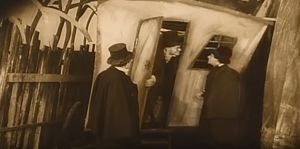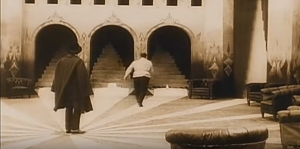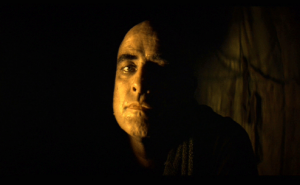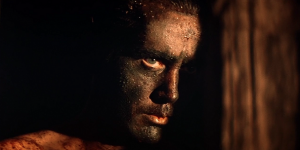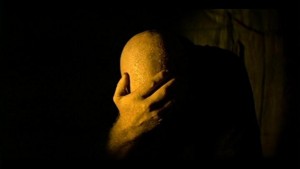The sets of The Cabinet of Dr. Caligari are visually appealing and complex to compensate for the lack of sound in the film. The lighting was staged in a manner to highlight the actors in the frame, as a theater production would draw attention to the lead. The light sources within the frame would often emit from a lamp encased in a grid-like cage. The shadows cast from the light would mimic the bars of a prison. The windows of the asylum cause similar shadows to communicate that Cesare lacks freedom. The shadows within each frame contribute to the creation of the ominous and frightening tone of a horror film. The shadows are often used by Cesare as a camouflage mechanism which causes uncertainty to arise within the audience. The shadows of the actors are cast in a manner to appear to be much larger than the actor themselves. The encroaching manner that the shadows embody represent the ease of evil to overcome the characters.
The sets are constructed in a manner that portrays a theme of geometric shapes and lines. The walls are not built with 90 ̊ angles as they lean inwards, to cause the entire asylum to appear as a casket. The geometric shapes that decorate the sets represent the instability of Cesare. They also allude to the lack of political direction within the era and reflects the aura of a haunted house. The geometric motif is an abstract representation of the unknown future for Germany. Throughout the sets, there are multiple solid lines that are painted to add complexity and depth to the piece, also described is the numerous political routes for Germany. The sets of The Cabinet of Dr. Caligari are built and staged in a manner that furthers the film as a work of art as well as a manifestation of the politics of the era.

